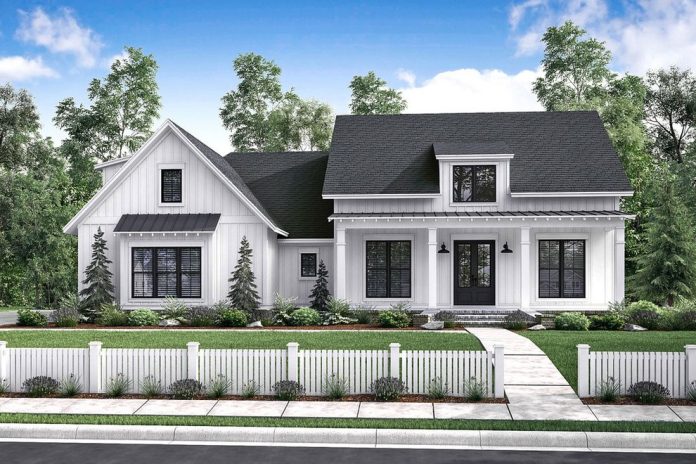The way we live and interact with our living spaces shapes our well-being and quality of life. Housing practice refers to the methods that people use to create comfortable living environments.
This article will explore the concept of housing practice. Furthermore, diving into its benefits, different types, factors to consider, and tips for effective implementation.
Understanding Housing practice
Housing practice is more than just owning or renting a place to live. It includes looking at the bigger picture and considering many things. This includes how the space is planned, how resources are used, how easy it is to access, how safe it is, and how it looks. Housing practice ensures that our homes and communities keep us healthy and comfortable. Additionally, it takes care of the environment in the long term.
Benefits of Housing practice
Better Life: Using good housing practices helps people feel healthier and happier, improving their lives.
Safety and Health: Following proper housing practices ensures that our homes are safe and healthy places to live. This means there’s a lower chance of accidents, getting sick, or being exposed to harmful things in our surroundings.
Saving Energy: When we use energy-efficient techniques in our homes, we can save energy. This helps us reduce our utility bills and contributes to taking care of the environment.
Bringing People Together: Good housing practices can create a sense of community. This means that neighbours can interact with each other better, leading to stronger bonds and a better neighbourhood.
Types of Housing Practice
Traditional Housing: Traditional housing values local cultures, craftsmanship, and sustainable construction methods.
Green Housing: Green housing minimises environmental impact through renewable energy, efficient insulation, and sustainable materials.
Smart Housing: Smart housing integrates technology for automation, energy monitoring, and enhanced control.
Affordable Housing: Affordable housing provides safe and decent living spaces for those with limited financial resources.
Factors to Consider
Location: The geographical location of a housing unit influences many factors. Such as climate, access to facilities, transportation, and community services.
Budget: Affordability is a key consideration when choosing housing practices. It determines the options available and long-term financial commitments.
Space and Layout: The size, configuration, and layout of a living space impact many things. This includes its functionality, comfort, and adaptability to changing needs.
Environmental Impact: Managing the environmental footprint of housing practices helps in making sustainable choices and minimising resource consumption.
Housing Practice Tips
Natural Lighting: Maximising natural light improves the ambience, energy efficiency, and overall well-being of the occupants.
Optimise Storage: Effective storage solutions maximise space utilisation, reduce clutter, and enhance the functionality of living areas.
Energy-Efficient Appliances: Choosing energy-efficient appliances reduces electricity usage and lowers utility costs.
Incorporate Green Spaces: Integrating green spaces within housing practices promotes biodiversity, improves air quality, and provides a connection with nature.
Embrace Minimalism: A minimalist approach to housing practices encourages simplicity, decluttering, and mindful consumption.
The Importance of Proper Housing Practice
Proper housing practice is extremely important for everyone. It is important for individuals, communities, and the planet. When we practice proper housing, we ensure that people have safe and healthy living conditions. It also helps us care for the environment and contributes to our overall well-being. By following good housing practices, we can create homes that meet our needs and also preserve resources for the future.
Challenges in Housing Practice
There are some challenges when it comes to housing. One challenge is affordability. The cost of housing is increasing, making it difficult for some people to find suitable homes.
Another challenge is urbanisation. As cities grow, there is a higher demand for housing, leading to overcrowding, fewer green spaces, and strain on infrastructure.
Sustainability is also a challenge. We need to find ways to balance the need for housing with protecting the environment by using innovative solutions and managing resources responsibly.
Sustainable Housing Practice
Sustainable housing practice focuses on reducing our impact on the environment and conserving resources. It involves using strategies like passive design, which helps us save energy, integrating renewable energy sources, collecting rainwater, and using materials that are friendly to the environment.
Future Trends in Housing Practice
There are some exciting trends that we can expect to see in housing practice in the future.
One trend is the move towards net-zero energy buildings. This means that buildings will produce as much energy as they consume, which is great for the environment.
Another trend is the increasing use of technology and artificial intelligence in homes. This will make our homes smarter, more secure, and more energy-efficient.
Lastly, there is a growing focus on the circular economy, which means recycling and reusing materials, reducing waste, and making products last longer.
Conclusion
Housing practice is all about the strategies and habits we adopt to create comfortable, functional, and sustainable homes. It is important to understand the significance of proper housing practice and consider key factors when building or living in a home. By implementing practical tips and making conscious choices, individuals and communities can create homes that promote well-being, social harmony, and environmental responsibility.





